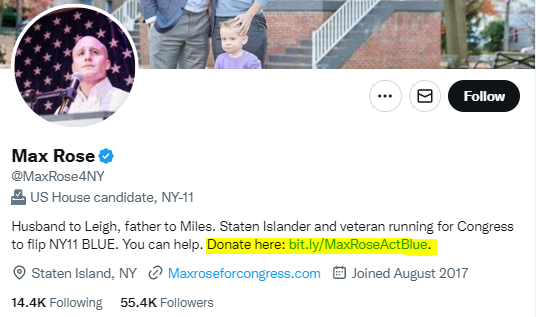Social media and politics: why it matters + 10 tips for campaigns
Like it or not, social media and politics are inseparable.
That’s because so much political discourse happens on platforms like Twitter. Over half of the US consumes political news via social.
Debates. Fundraising and fact-checking. News and results.
With social media serving as the modern-day public forum, all of the above are just a tap away for voters.
That’s why the stakes are high for candidates on social media. Rather than wait for stories to publish, politicians can break their own news in real time.
The challenge? Navigating social media and politics is tricky if you’re responsible for managing a public account. Below we break down how candidates can step up their social game.
How social media has transformed political campaigns
Before we get into the nitty-gritty of our tips, let’s address a bigger question:
Why is social media such a staple of politics in the first place?
Social media might not be new to the public at large. However, incorporating social media in political campaigns didn’t see significance until the 2008 United States presidential elections with then- candidate Barack Obama. With the power of social networking, political candidates reach wider audiences than traditional media and in real time.
As a result, a lot has changed in social media and politics since the 2020 US presidential election. Let’s look at the specifics below.
More people get their news from social platforms
There’s no shortage of news sources sending stories directly to our smartphones.
According to 2022 data from Pew, the top social networks for news are Twitter (53%), Facebook (44%) and Reddit (37%). Surprisingly, TikTok (33%) isn’t too far behind these sources.

Transparency and trust versus mainstream media
Data from Gallup says 36% of citizens in the US have a “great deal” or “fair amount” of trust in mainstream news sources. This includes cable news and print media. Only 11% of self-described Republicans (and 31% of independents) claim to trust the media.
To say that citizens have trust issues when it comes to traditional media would be an understatement.
Social media is also blurring the lines of what’s considered a “trustworthy” new source. Pew data says that adults under 30 trust news from social media about as much as traditional outlets.

Social media is far from a perfect news source.
Still, the benefit of real-time fact-checking is a big plus for social-savvy consumers. Social platforms also provide politicians with a direct line to the public.
That means the value of social media transparency carries over to candidates. After all, they’re able to speak to voters in their own words and on their own terms.
Consider also the massive reach of social media versus mainstream sources. With shrinking TV audiences, social is the biggest show in town for politicians.
People will roll their eyes at President Biden spending time with TikTok influencers this week. But this is the gag: The eight of them have 67M+ followers. By comparison, about 1.5-2.5M watch Fox, CNN or MSNBC in prime time. More from @taylorlorenz.https://t.co/jf9XNcEewP
— Steven Overly (@StevenOverly) October 27, 2022
More opportunities for fundraising
The explosion of political advertising on social media since 2020 is well-documented.
But the degree to which campaigns are spending now is truly night and day.
Facebook remains a massive force for fundraising and political ads. The Facebook Ad Library lets anyone see to see how much any given campaign is spending. And it’s a lot.
In fact, $3.6 billion has been spent on political and social issue ads since May 2018.

Consider that the top Senate fundraisers also have engaged and active social teams.

As a result, those candidates can translate their presence into serious campaign cash.
Raphael Warnock's Senate campaign has announced a $13.6 million fundraising haul in Q1 of 2022, which the campaign says is "the most money ever raised by an U.S. Senate candidate in the first quarter of an election year."
Sen. Warnock's campaign has $25.6 million cash on hand.
— Kyle Griffin (@kylegriffin1) April 15, 2022
10 tips for running a political campaign on social media
Below we’ve broken down key best practices of social media for political campaigns. From figuring out your content strategy to dealing with trolls, we’ve got you covered.
1. Engage the public via live content
Traditional newscasts aren’t going anywhere quite yet.
That said, social media video lets politicians broadcast their own news and chat with constituents.
For example, many politicians regularly stream on Facebook and Instagram. Rather than just talk at voters, live video encourages meaningful and personable dialogue.
Alexandria Ocasio-Cortez’s IG Live streams rack up massive engagement. For reference, this June 2022 IG Live on the state of Roe v. Wade earned over a million views:

Social video is powerful for politicians addressing local issues not covered by bigger outlets. This includes local ordinances and disaster relief.
2. Fact-check your content prior to publishing
Social media represents a massive news source for voters. Still, unchecked platforms can be a breeding ground for misinformation.
MIT research says that falsehoods are 70% more likely to be Retweeted than the truth. A staggering 38% of people have admitted to accidentally sharing misinformation themselves.
Yikes.
Walking back comments because you didn’t take the time to fact-check them is a bad look. Also, False claims and misinformation are difficult to contain once they’ve been made.
Our advice? Make sure to put together some sort of approval process for your account. Always double-check your sources and wording before making claims that could be twisted.
If you use a platform like Sprout, take advantage of publishing features to keep the above in check.
Social media and politics aren’t a free-for-all. For example, did you know that Presidential Tweets are considered public record? There are real-world consequences that go along with a politician’s social presence.
3. Don’t count out “younger” social media platforms
Twitter and Facebook are the go-to platforms for political accounts.
And based on social media demographics and how age groups vote, this makes perfect sense.
Of course, don’t count out Millennials and Gen Z. Both represent growing voter bases interested in activism. As a result, we’re seeing more politicians investing in Instagram and TikTok.
The fact that 33% of citizens consume news and political content on TikTok is also telling. Notably, Tim Ryan has managed to earn 33,000+ followers with his self-aware TikTok presence. Meanwhile, President Biden is inviting influencers to the White House in a push to reach younger voters.

There is no “single” platform when it comes to social media and politics. Demographics matter and the largest voting blocs are active on Facebook and Twitter.
4. Put your fundraising efforts front-and-center
Running an effective social media political campaign is about much more than “Likes.”
We won’t get into the anatomy of a perfect political ad on Facebook. Just note that fundraising is central to social media and politics.
GREAT NEWS: A recent poll shows I’m within striking distance of flipping a House seat back to blue. Tonight is our FINAL FEC fundraising deadline & what we raise will determine how many voters we reach before Election day. Will you please RT and chip in to the link in my bio? 🙏
— Max Rose (@MaxRose4NY) October 20, 2022
Beyond running Facebook ads, requesting donations via secure links is likewise fair game. Many candidates put donation links in their social bios or as a dedicated “pinned” post.

Of course, don’t use social media as a place to spam donation messages. Instead, weave them into your content strategy as needed alongside your updates.
5. Learn how to deal with trolls
It’s common to deal with burnout as a social media manager.
And if you’re managing social media for political campaigns, you know this all too well.
Trolling and harassment. Comment spam. Mass reporting.
Unfortunately, this all comes with the territory of social media and politics.
Beyond developing a thick skin, the best advice we can offer is to not feed the trolls. Try to emphasize a sense of community in the comments and don’t encourage needless fighting.
Just keep in mind that public officials can’t block people on Facebook. There’s plenty of debate over whether or not doing so is legal or ethical as social media is seen as a public forum.
Leave it to supporters and community members to report inappropriate posts. Try to push more intense disagreements into your DMs when appropriate. Whatever you do, be civil.
6. Recognize that not everybody is interested in politics
Comparing social media and politics to that of a business or brand is apples and oranges.
Sure, your goal is to grow your follower account and increase the exposure of your campaign.
But as noted in our guide to social media and government, political accounts are seen as the most “annoying” by the public at large.
Some people go out of their way to block and avoid political discussions via social media. The “Muted words” function on Twitter is handy for this.

Attracting followers and support might seem like an uphill battle at times. Focus on your goals and engage with accounts relevant to your cause.
7. Consistently ask (and answer) questions
Asking questions is a proven way to boost engagement on social media.
Let me ask you a question. Does it make sense to you that in America today, 2 billionaires own more wealth than the bottom 40% and the top 1% owns more wealth than the bottom 92%?
— Bernie Sanders (@SenSanders) October 21, 2021
Q&As are the bread and butter of political accounts. Posing topical questions to your follower is a simple way to encourage a bit of back-and-forth. Likewise, it’s a way to show that you’re willing to listen to your constituents.
Using Instagram Stories, you can vet questions privately and post answers to followers publicly. Make a point to respond to comments when appropriate. This allows you to publish more thoughtful responses. Publishing Stories as highlights also gives voters something to reference in the future.

8. Earn engagement with visual content versus just text-based posts
Visual content such as videos and infographics are among the most-shared social posts. This rings true across pretty much every platform.
If you’re making an important announcement, consider how you can put together a visual to match up with it. Infographics are particularly popular among politicians.
Bite-sized videos also have viral potential, especially on Twitter or TikTok. For reference, Katie Porter’s short-form videos regularly pop off and earn huge engagement.
Markup (noun): What a corporation charges consumers on top of production costs, to generate profit.
Example: The biggest recorded year for markups was 2021. pic.twitter.com/LcmeOEhRGt
— Rep. Katie Porter (@RepKatiePorter) October 19, 2022
Don’t worry about investing a ton of time and energy into editing if you’re looking to get on board with video, by the way. Off-the-cuff cell phone footage has become a staple of political social media, too.
9. Find time for positive, non-partisan posts
It’s no secret that tensions are high among parties. Data says political polarization is reaching a fever pitch.
Not everything has to be partisan, though. Note what we said earlier about the fact that not everyone wants to hear about politics. This might also be the case for people that do follow you.
A positive story “just because” can be a much-needed break from fierce debates. Consider some types of content for followers regardless of party affiliation. Uplifting and local stories are always a plus.
Who's this guy? 🤣 pic.twitter.com/8tqGe61x0I
— Reverend Raphael Warnock (@ReverendWarnock) October 23, 2022
Younger, social-savvy politicians likewise can capitalize on memes and humor to boost their posts.
This Medicare for All bill is high key bussin bruh. All my constituents have been saying it slaps so say less. https://t.co/prVMYEHq6S
— Maxwell Alejandro Frost (@MaxwellFrostFL) October 14, 2022
10. Make a point to post consistently
With so many political campaign strategies made possible by social media, there’s a lot of content to juggle.
Donation requests. Upcoming events and elections. Legislation updates.
And that doesn’t even include real-time news that happens from day to day.
Given how quickly the world of politics evolves, it’s important to have your most important updates and content organized and queued up. By reviewing the best times and how often to post on social media, you can maximize your account’s reach and get in front of more voters on the regular.
That’s where Sprout Social’s publishing tools can come in handy. Allowing you to schedule and publish content across multiple platforms, you don’t have to second-guess if a crucial update was sent out to voters.

Ready to take on the world of social media and politics?
There’s a lot that goes into any social media political campaign.
Understanding what to post and how to wrangle your responses will empower you to build support and a sense of community. Doing so matters for politicians.
And if you want help with doing exactly that, we encourage you to check out our social media marketing strategy guide. Given how busy political accounts are, having more help is always a bonus!
The post Social media and politics: why it matters + 10 tips for campaigns appeared first on Sprout Social.






